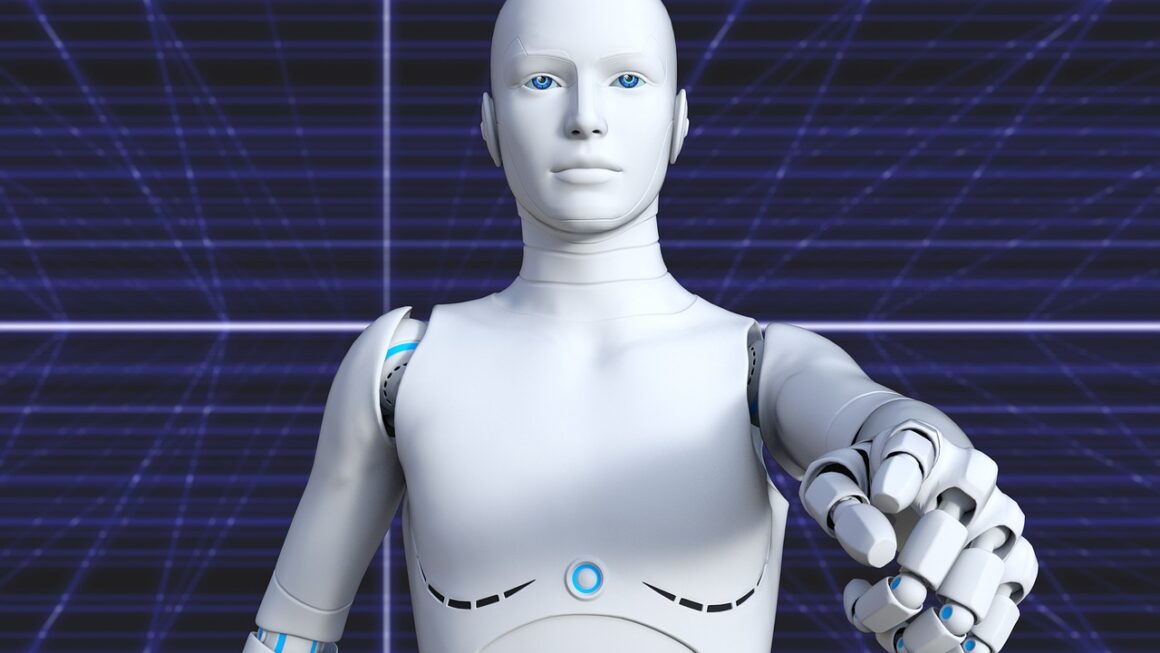Generative AI is rapidly transforming industries, pushing the boundaries of what’s possible with artificial intelligence. From creating photorealistic images to writing compelling marketing copy, these powerful models are unlocking new levels of creativity and efficiency. But what exactly is generative AI, and how can it benefit your business? This comprehensive guide will delve into the world of generative AI, exploring its capabilities, applications, and potential impact.
What is Generative AI?
Defining Generative AI
Generative AI refers to a class of artificial intelligence algorithms designed to generate new content, including text, images, audio, video, and code. Unlike traditional AI models that focus on analysis and prediction, generative models learn the underlying patterns and structures of existing data and then use that knowledge to create entirely new and original outputs. These models are trained on massive datasets and leverage techniques like deep learning to understand complex relationships and generate realistic and coherent content.
How Generative AI Works
Generative AI models typically use architectures like:
- Generative Adversarial Networks (GANs): GANs involve two neural networks: a generator that creates new content and a discriminator that tries to distinguish between the generated content and real data. Through adversarial training, the generator gets better at creating realistic content that can fool the discriminator.
- Variational Autoencoders (VAEs): VAEs learn a compressed representation of the input data (latent space) and then use this representation to generate new samples.
- Transformer Models: Specifically large language models like GPT (Generative Pre-trained Transformer), which use the attention mechanism to weigh the importance of different words in a sentence, allowing them to generate coherent and contextually relevant text.
The training process involves feeding the model a large dataset relevant to the desired output (e.g., images of cats for an image generation model). The model then learns to recreate and extend the patterns present in the data.
Key Characteristics of Generative AI
- Creativity: Generative AI can produce novel and original content.
- Automation: It automates tasks that traditionally required human creativity and expertise.
- Personalization: It can generate personalized content tailored to individual preferences.
- Efficiency: It can significantly speed up content creation processes.
Applications of Generative AI Across Industries
Content Creation and Marketing
- Generating Marketing Copy: Tools like Jasper and Copy.ai leverage generative AI to write ad copy, social media posts, website content, and email campaigns. For example, a company could use AI to generate multiple versions of an ad campaign and test which one performs best.
- Creating Images and Videos: DALL-E 2, Midjourney, and Stable Diffusion can generate stunningly realistic images from text descriptions. These tools are used by artists, designers, and marketers to create visuals without needing extensive design skills. Imagine a small business creating professional product photos without hiring a photographer.
- Content Summarization and Rewriting: Generative AI can summarize lengthy documents, articles, or reports, making it easier to extract key information. It can also rewrite existing content to improve clarity, tone, or SEO.
Software Development and Coding
- Code Generation: GitHub Copilot, powered by OpenAI’s Codex, assists developers by suggesting code snippets, completing lines of code, and even generating entire functions based on natural language descriptions. This significantly speeds up the coding process and reduces errors.
- Debugging and Testing: Generative AI can help identify and fix bugs in code, as well as generate test cases to ensure software quality.
- Automated Documentation: Automating the creation of documentation for software projects saving developers time and ensuring consistency.
Healthcare and Pharmaceuticals
- Drug Discovery: Generative AI can be used to design new drug candidates, predict their effectiveness, and optimize their chemical structures. This can accelerate the drug discovery process and reduce the cost of research and development.
- Personalized Medicine: By analyzing patient data, generative AI can create personalized treatment plans tailored to individual needs and genetic profiles.
- Medical Imaging Analysis: Generative AI can assist radiologists in analyzing medical images, such as X-rays and MRIs, to detect diseases and abnormalities.
Finance and Banking
- Fraud Detection: Generative AI can identify fraudulent transactions and activities by analyzing patterns and anomalies in financial data.
- Risk Assessment: It can assess the risk associated with loans, investments, and other financial products.
- Personalized Financial Advice: It can provide personalized financial advice to customers based on their financial goals and risk tolerance.
Benefits of Implementing Generative AI
Increased Efficiency and Productivity
- Automation: Generative AI automates repetitive tasks, freeing up human employees to focus on more strategic and creative work.
- Speed: It can generate content and solutions much faster than traditional methods.
- Scalability: It can handle large volumes of data and requests, making it ideal for businesses with high demands.
Enhanced Creativity and Innovation
- New Ideas: Generative AI can generate novel and unexpected ideas, sparking creativity and innovation.
- Experimentation: It allows for rapid experimentation and iteration, enabling users to explore different options and possibilities.
- Accessibility: It democratizes access to creative tools and resources, empowering individuals and small businesses to create professional-quality content.
Improved Customer Experience
- Personalization: Generative AI can create personalized experiences tailored to individual customer preferences.
- Engagement: It can generate engaging and interactive content that captures attention and drives conversions.
- Responsiveness: It enables businesses to respond quickly to customer inquiries and needs.
Cost Reduction
- Reduced Labor Costs: Automation reduces the need for human labor, lowering operational costs.
- Faster Time to Market: Accelerated content creation and problem-solving lead to faster time to market for products and services.
- Optimized Resource Allocation: Better decision-making based on data analysis helps optimize resource allocation and reduce waste.
Challenges and Considerations
Data Requirements and Quality
- Large Datasets: Generative AI models require vast amounts of data to train effectively.
- Data Quality: The quality of the data directly impacts the quality of the generated content. Biased or inaccurate data can lead to biased or inaccurate outputs.
- Data Security and Privacy: Protecting the security and privacy of sensitive data is crucial when training generative AI models.
Ethical Considerations
- Bias and Fairness: Generative AI models can perpetuate and amplify biases present in the training data, leading to unfair or discriminatory outcomes.
- Misinformation and Deepfakes: Generative AI can be used to create realistic but fake images, videos, and audio, which can be used to spread misinformation and propaganda.
- Intellectual Property: Determining ownership and licensing of content generated by AI is a complex legal issue.
Implementation Challenges
- Technical Expertise: Implementing and maintaining generative AI models requires specialized technical expertise.
- Integration Complexity: Integrating generative AI into existing systems and workflows can be challenging.
- Cost: Developing and deploying generative AI models can be expensive, requiring significant investment in hardware, software, and personnel.
Conclusion
Generative AI presents immense opportunities for businesses across various industries. Its ability to automate content creation, enhance creativity, improve customer experiences, and reduce costs makes it a powerful tool for driving innovation and growth. However, it’s crucial to address the ethical concerns, data requirements, and implementation challenges associated with generative AI to ensure its responsible and effective use. By understanding the capabilities and limitations of generative AI, businesses can leverage its potential to unlock new levels of efficiency, creativity, and competitive advantage. As the technology continues to evolve, staying informed and adapting to new developments will be key to harnessing the full power of generative AI.




